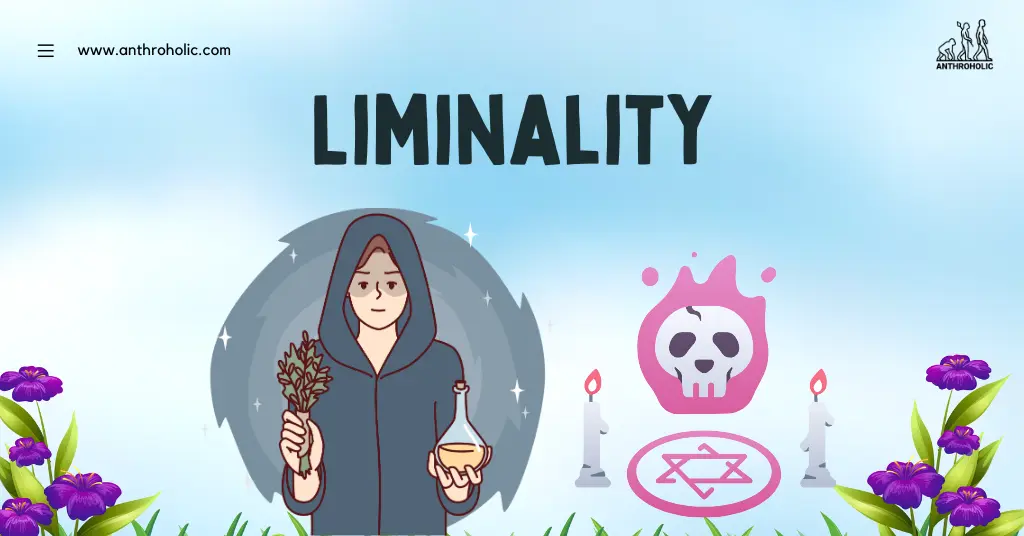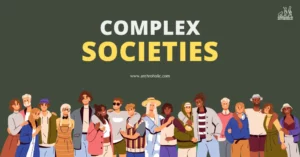AI Answer Evaluation Platform Live Now. Try Free Answer Evaluation Now
Liminality
The world around us thrives on boundaries and structures, from social norms to scientific laws. However, occasionally, we find ourselves in spaces that blur these boundaries, creating a sense of ambiguity and disorientation. One such concept that captures this is “liminality” [1].

Definition of Liminality
Liminality, a term first coined by anthropologist Arnold van Gennep in his work “The Rites of Passage” [2], originates from the Latin word ‘limen,’ which means ‘threshold.’ This concept refers to the transitional period or phase of a rite of passage, during which the participant lacks a defined social status [2]. Liminal spaces or periods can be tangible (like a border or a twilight period) or intangible (such as a state of mind).
Properties of Liminality
Liminality is characterized by three main properties:
- Ambiguity or disorientation: The individual or group in the liminal space feels disconnected from their usual social structures and norms.
- Potentiality: Liminal spaces offer the possibility of transformation, allowing one to reassess and potentially redefine their identity.
- Communitas: It often results in a deep sense of togetherness and community, as shared experiences in liminal spaces tend to foster a sense of solidarity [3].
The Concept of Liminality in Different Fields
The application of liminality stretches beyond the realm of anthropology. Here, we’ll delve into its role in psychology, sociology, and literature.
Liminality in Psychology
In psychology, liminality is often associated with major life transitions, such as adolescence, marriage, or the transition to parenthood, and is seen as a period of growth and self-discovery [4].
| Life Event | Liminal Phase |
|---|---|
| Adolescence | Transition from childhood to adulthood |
| Marriage | Transition from singlehood to partnership |
| Parenthood | Transition from individual to caregiver |
Table 1: Examples of liminality in major life transitions.
Liminality in Sociology
Sociologically, liminality can represent societal or cultural periods of transition. An example can be the upheaval experienced during periods of significant social or political change, like revolutions or large-scale protests [5].
Liminality in Literature
In literature, characters often pass through liminal stages as part of their narrative arc, often signifying periods of self-discovery and growth. This concept has been used by authors like J.K. Rowling in the “Harry Potter” series, with the character’s journey from childhood to adulthood [6].
The Impact of Liminality
Although liminality can be an unsettling experience due to the inherent ambiguity, it also offers unique opportunities.
Challenging the Status Quo
Liminality provides a space for questioning and potentially transforming established societal norms and structures. It provides room for alternative ways of thinking and living [7].
Personal Growth
As a rite of passage, it serves as a period of growth and self-discovery. The individual in the liminal space often emerges with a changed identity or perspective [8].
Strengthening of Social Bonds
Communitas, or the sense of camaraderie that emerges from shared liminal experiences, can create strong social bonds and foster a sense of belonging [3].
Liminality and Modernity
As society advances into the modern age, the frequency and influence of liminal experiences have become more pronounced. The transition from traditional societies to our current postmodern age can itself be seen as a vast liminal space, where norms and boundaries are in constant flux [9].
Liminality in the Digital Age
One key aspect of modernity is the digital age, which has created new forms of liminality. Virtual spaces, such as social media platforms or online communities, often serve as liminal spaces where traditional social rules may not apply. Here, individuals can explore different aspects of their identities, free from the usual social constraints [10].
| Platform | Liminal Space |
|---|---|
| Social Media | Transition from real-life interactions to digital connections |
| Online Communities | Transition from physical community spaces to virtual gatherings |
Table 2: Examples of liminality in the digital age.
Liminality and Globalization
Similarly, globalization has brought about a form of liminality on a global scale. Borders between nations have become less rigid, cultures intermingle, and people frequently move between different geographic and cultural spaces, resulting in hybrid identities [11].
The Challenges of Liminality
While liminality can lead to personal growth and societal progress, it is not without its challenges.
Anxiety and Uncertainty
Liminal spaces are often characterized by a lack of clarity, which can lead to feelings of anxiety and uncertainty. Not knowing what lies ahead can be unnerving, and coping with these feelings is a significant aspect of navigating liminality [12].
Social Isolation
In some instances, being in a liminal space can lead to feelings of social isolation. For example, individuals undergoing significant life changes such as migration, might feel disconnected from both their old and new communities during the transition period [13].
Risk of Exploitation
Liminal spaces can sometimes be exploited by individuals or groups with harmful intentions. For instance, online platforms can be used to disseminate harmful information or for illicit activities [14].
Ways to Navigate Liminality
Navigating liminal spaces can be challenging, but there are strategies to make the journey easier:
- Acknowledgment: Recognizing and accepting the state of liminality is the first step in dealing with it effectively [15].
- Patience: Since liminality is inherently transient, patience can help individuals endure the ambiguity [16].
- Support: Social support can help mitigate feelings of anxiety or isolation. This can be in the form of friends, family, or professional guidance [17].
- Exploration: Embracing the potential for change and using the time to explore new ideas or perspectives can lead to personal growth [18].
Conclusion
Liminality is an important concept in understanding both individual and societal transformations. While it may be characterized by ambiguity and disorientation, it also presents opportunities for personal growth and social bonding. By embracing liminality, we can better navigate these ‘in-between’ spaces and use them as catalysts for positive change.
References
[1] Turner, V. (1969). The Ritual Process: Structure and Anti-Structure.
[2] Van Gennep, A. (1960). The Rites of Passage.
[3] Thomassen, B. (2014). Liminality and the Modern: Living Through the In-Between.
[4] Jung, C.G. (1959). The Structure and Dynamics of the Psyche.
[5] Horvath, A., Thomassen, B., & Wydra, H. (2015). Breaking Boundaries: Varieties of Liminality.
[6] Rowling, J.K. (1997-2007). Harry Potter series.
[7] Szakolczai, A. (2009). Liminality and Experience: Structuring transitory situations and transformative events.
[8] Shields, R. (1991). Places on the Margin: Alternative geographies of modernity.
[9] Bjørhovde, H. (2019). Liminality in the Novels of J.M. Coetzee.
[10] Leaning, M. (2009). The Internet, Power, and Society: Rethinking the power of the internet to change lives.
[11] Bhabha, H. (1994). The Location of Culture.
[12] Beech, N. (2011). Liminality and the practices of identity reconstruction. Human Relations.
[13] Arnold, M. (2017). The Politics of Migration and Diaspora.
[14] Wall, D.S., & Williams, M. (2013). Policing Cybercrime: Networked and Social Media Technologies and the Challenges for Policing.
[15] Kegan, R., & Lahey, L. (2009). Immunity to Change: How to Overcome It and Unlock the Potential in Yourself and Your Organization.
[16] Ibarra, H. (2003). Working Identity: Unconventional Strategies for Reinventing Your Career.
[17] Essers, C., & Tedmanson, D. (2014). Upsetting ‘Others’ in the Netherlands: Narratives of Muslim Turkish Migrant Businesswomen at the Crossroads of Ethnicity, Gender and Religion. Gender, Work & Organization.
[18] Bridges, W. (2004). Transitions: Making Sense of Life’s Changes.




